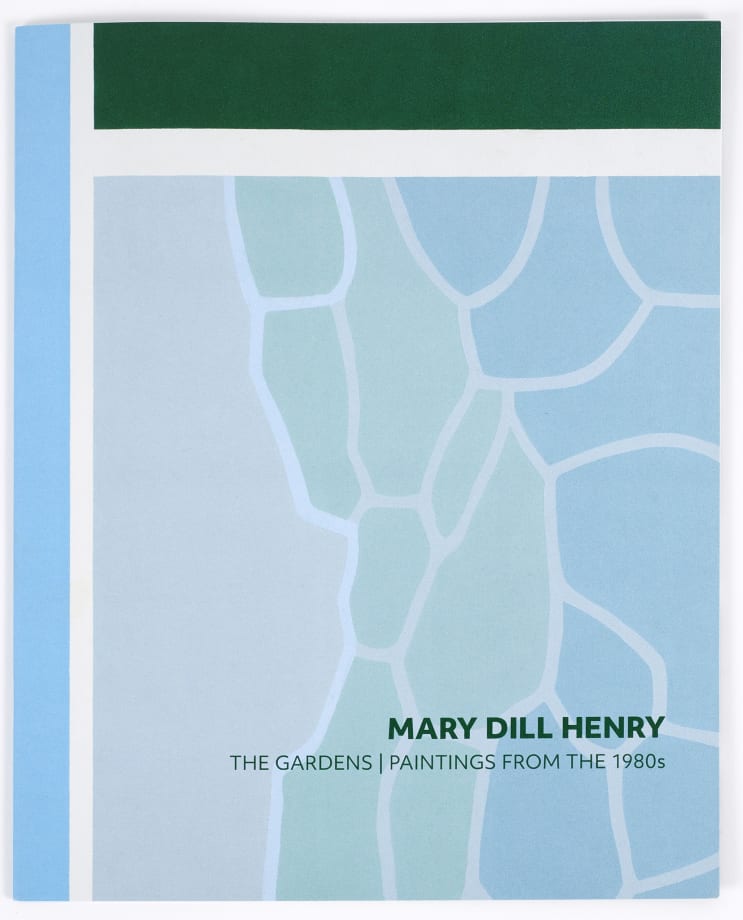Museum; the University of Puget Sound, Tacoma; the Portland Art Museum, Oregon; the Sheldon Art Museum, University of Nebraska, Lincoln; and the Institute of Design, Chicago, as well as corporate art collections, including Microsoft, Safeco, Ampex, Varian Associates, and Hewlett-Packard. Additionally, in 2022, the Minneapolis Institute of Art acquired a large scale Henry from 1968.
Mary Dill Henry: The Gardens
Excerpt from Mary Dill Henry: The Gardens
By Lisa N. Peters, Ph.D.
In 1982, Mary Dill Henry settled on Whidbey Island, Washington, where she lived alone, deep in the woods, for the rest of her life. Yet, at the same time, she gained a reputation as one of the leading artists in the Pacific Northwest in the Modernist tradition. Since 1980, seven retrospectives of her art have been held in the region, including several museum shows. Among many honors, she received a Flintridge Award for Visual Artists in 2001 and the Twining Humber Award for Lifetime Achievement, from the Artist Trust, in Seattle, in 2006. Her paintings belong to many public collections, including the Seattle Art Museum; the Frye Art Museum, Seattle; the Whatcom Museum, Bellingham, Washington; the Tacoma Art
Museum; the University of Puget Sound, Tacoma; the Portland Art Museum, Oregon; the Sheldon Art Museum, University of Nebraska, Lincoln; and the Institute of Design, Chicago, as well as corporate art collections, including Microsoft, Safeco, Ampex, Varian Associates, and Hewlett-Packard. Additionally, in 2022, the Minneapolis Institute of Art acquired a large scale Henry from 1968.
Museum; the University of Puget Sound, Tacoma; the Portland Art Museum, Oregon; the Sheldon Art Museum, University of Nebraska, Lincoln; and the Institute of Design, Chicago, as well as corporate art collections, including Microsoft, Safeco, Ampex, Varian Associates, and Hewlett-Packard. Additionally, in 2022, the Minneapolis Institute of Art acquired a large scale Henry from 1968.
For Henry, such renown was long overdue. The most significant influence on her art occurred in the mid-1940s, when she studied in Chicago with the Bauhaus teacher and visionary, László Moholy-Nagy (1895–1946). Living in the Bay area and then up the coast in Mendocino, California, she was always a serious artist, exhibiting her work regularly but keeping a low profile. Becoming divorced in 1966 was liberating for Henry. Breaking free from the constraints of marriage enabled her to leave behind her role as a housewife and focus on her art, although she struggled to make ends meet.
Biography by Lisa N. Peters, Ph.D.
Designed by Mark Robinson
Published by Berry Campbell
Printed by Meridian, Rhode Island

